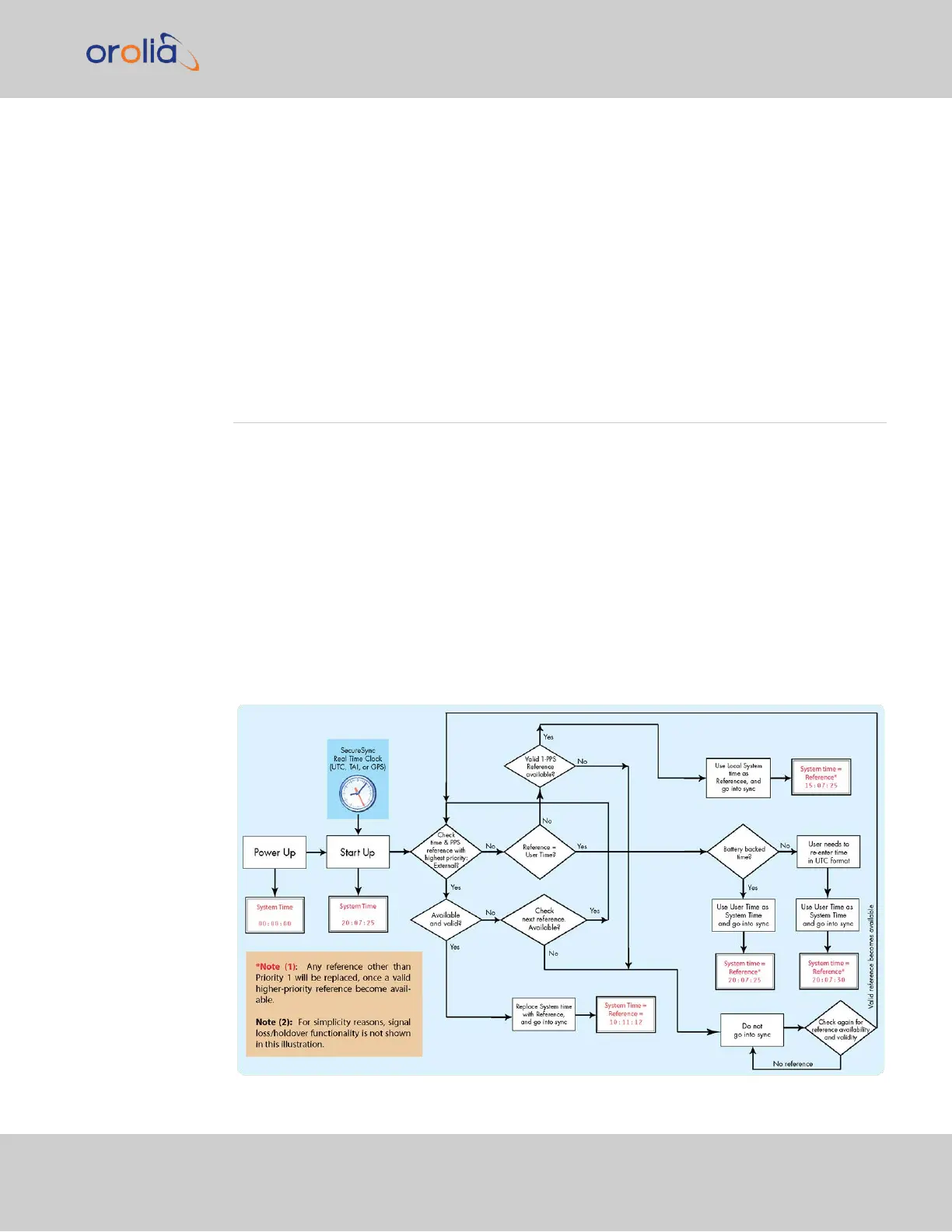SecureSync’s time keeping. It is also possible to enter the exact day and time when the
leap second is to be applied, and to delete a leap second.
See also: "Leap Seconds" on page176
Local Clocks panel
You can create multiple different Local Clocks, as needed. The names of all Local Clocks
that have already been created are displayed in the Local Clocks panel.
See also "Local Clock(s), DST" on page179.
3.2 System Time
The time that SecureSync maintains is referred to as the System Time. The SystemTime
is used to supply time to all of the available time-of-day outputs (such as NTP time stamps,
time stamps in the log entries, ASCII data outputs, etc.).
By default, the SystemTime is synchronized to SecureSync’s input references (such as
GNSS, IRIG, ASCII data, NTP, PTP, etc.).
If a UTC-based time is not required, however, it is also possible to manually set the System
Time to a desired time/date, or to use the unit's battery backed time (Real Time Clock) as
System Time (with an external 1PPS reference).
The flow chart below illustrates how SecureSync obtains the highest available and valid ref-
erence, depending on whether an external source is chosen as reference, or an internal
(User[x], or Local System).
3.2 System Time
CHAPTER 3 • SecureSync 2400 User Manual Rev. 2
167
